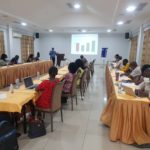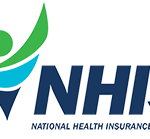Introduction
Gender inequality is not a novelty in any part of the world, and while there have been advances globally and nationally, the fact remains that progress has been slow. Gender inequality in the quest for healthcare is much devastating as women and girls, who are the most vulnerable, are at the receiving end of these inequalities.
In 1978, world leaders converged in a conference and resolved to make Primary Health Care (PHC) a means of attaining Universal Health Coverage (UHC), thus the emergence of the Alma-Ata Declaration. Years after, access to quality health care still remains a challenge. Forty years (40) after the Alma-Ata Declaration, a new commitment was elicited from world leaders in Astana to speed up efforts to attain health for all. The new commitment reiterated the importance of using PHC as a means of attaining UHC and renewed political commitment towards the action.
Women and girls continue to compete with a labyrinth of structural and socio-cultural factors which impede their access to quality health care, particularly in low-income countries. Across sub-Saharan Africa, millions of women and girls have limited or no access to sexual and reproductive health (SRH) services and the information they require to make informed SRH choices. According to a 2018 UNFPA report, West and Central Africa had very high adolescent birth rates of 129 live births per 1,000 teenagers, compared to a global average of 52 live births per 1,000 adolescents. In these regions, adolescent pregnancies and child marriages are considered major contributors to high maternal and child mortality rates. In Ghana, a woman or girl faces a 1 in 54 chance of dying from complications due to pregnancy or childbirth, compared to a 1 in 4,300 chance in the developed world. These challenges also impede the realization of SDG 3.
Gender inequality in accessing care have further been heightened by the COVID-19 pandemic, which has exacerbated pre-existing inequalities and exposed the most vulnerable to the pandemic’s increasing effects, including increased sexual and gender-based violence. While services for women and girls are provided, gender equality is not a priority in the delivery of PHC. Women’s and girls’ health have traditionally been viewed as primarily concerned with reproductive health. As a result, available services and delivery methods do not adequately support their access to health care. Despite specific women-friendly policy provisions, program arrangements do not take into account the realities of women’s and girls’ mobility, time, and material resources.
Findings from a Study by ARHR
Findings from a recent study by ARHR to examine the experiences of women and girls regarding access, quality, and affordability of SRH services have revealed that women and girls in Ghana continue to face significant barriers in accessing SRH information and services.
The study, which was conducted in seven communities in the Akyemansa and South Dayi districts in Ghana discovered a lack of access to SRH information by adolescent girls. The majority of adolescent girls interviewed, for example, were completely unaware that most facilities offered assistance with menstrual challenges. The few that were aware simply found it embarrassing to seek assistance for their SRH issues there, and so either suffered quietly or opted for indigenous remedies.
The study also found that the unavailability of medicines, ultrasound scanners, and other equipment at healthcare facilities compelled most women and adolescent girls to circumvent the formal healthcare system by relying on less credible healthcare options such as sharing medicines, self-medicating through drugstores, and relying on local pastors for spiritual answers to their healthcare questions.
The lack of ultrasound scanners in health facilities, according to participants, accounted for increased incidences of child mortality in the communities. Narrating their ordeals, a participant described an instance where she was referred but ended up giving birth on the way due to the long distance (45 km: or 1hr 30 min). Another woman recounted losing her baby while on one of these travels. Participants perceived that these unfortunate isolated incidences could have been avoided had there been an ultrasound machine at their health facilities.
The study further revealed that misinformation about the side effects of family planning services discouraged participants from accessing the service. Additionally, the majority of the health facilities were found to be privacy-unfriendly and this deterred most adolescent girls from accessing the adolescent corner services that shared a space with the family planning services. This contributes to a surge in unplanned pregnancies and unsafe abortions in the communities.
Consequently, the challenges in accessing care, have significantly undermined women and girl’s confidence in the healthcare delivery system and discouraged them from patronizing antenatal and other reproductive health services. Most women and girls interviewed also admitted to often skipping ultrasound referrals to higher facilities or procuring medicines at pharmacies due to financial constraints. Thus, further reinforcing their actions to resort to unconventional means despite recognising the dangers associated with these options, particularly for pregnant women and girls.
Recommendations
Cumulatively, the study’s findings suggest that despite efforts by the government to improve women and girls’ health, challenges persist, and enhancing health systems alone is not sufficient to reduce gender disparities. Gender inequality in health needs a holistic approach to tackling systemic, structural, socio-cultural, and economic barriers that prevent women and girls from accessing health care.
Advancing, prioritizing, and accelerating efforts to end gender-based health inequities for improved health outcomes for women and adolescent girls is thus a collective responsibility that requires efforts of government, civil society organizations (CSOs), and individuals. Particularly, in light of the COVID-19 pandemic and the current economic recession, which has the potential of rolling back progress made.



